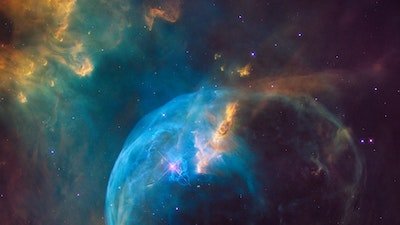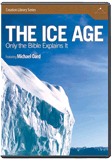Subglacial Science
“Raiders of the lost lake”1 reach Vostok’s water.
News Source
- Huffington Post: “Lake Vostok, Antarctica’s Hidden Lake, Reached By Russia”
Russia’s Arctic and Antarctic Research Institute (AARI) reports scientists drilling down to Lake Vostok have reached the subglacial lake’s surface. They were racing to reach it, having drilled through about 3750 meters of ice, before the close of the Antarctic summer season. “There is no other place on Earth that has been in isolation for more than 20 million years,” said AARI’s Lev Savatyugin. “It's a meeting with the unknown.” Scientists worldwide are eager to learn whether Vostok’s waters and sediments harbor any life forms.
Lake Vostok is the largest of over 300 subglacial lakes discovered by radar and satellite, and drilling efforts have been underway for about two decades. The water in these lakes is believed to be liquid thanks to geothermal heat and the pressure of overlying ice.
Antarctic ice has kept the lake dark and somewhat isolated for many years. Many scientists believe the ice has covered the lake for 14 million years2 or more, based on extrapolation from ice core data. Because satellite imaging has detected connections between some of the subglacial lakes, and because water frozen at the surface likely gets carried away by motion of the ice pack, Lake Vostok may not have been completely shut off from contact with the world.3 Two kinds of heat-loving bacteria known to thrive at 50–52 degrees Celsius were isolated in accretion ice brought up from a depth of 3488 meters.4 These bacteria may have been flushed into the accretion ice by tectonic activity, the author of the 2011 report suggests, but they would not be expected in the cold (–2 degrees Celsius) water of the lake.
Russian scientists will return in December to begin sampling water from Lake Vostok. They also plan to send a robotic device into the lake to sample the sediment at the bottom. Many have expressed concern over Russian drilling methods, questioning whether the use of kerosene, lubricants, and Freon might contaminate Lake Vostok. AARI director Valery Lukin reports 1.5 cubic meters of the material gushed up from the boreshaft as a result of pressurized water pushing up from the lake. Since that water surely froze, the lake should, he believes, remain free of contamination. Concern for contamination includes the wish to avoid spoiling the lake and the desire to avoid introducing microbes from the surface and then misinterpreting them as indigenous.
The extreme environment of Lake Vostok is thought comparable to the extreme conditions on Jupiter's and Saturn's moons.
The extreme environment of Lake Vostok is thought comparable to the extreme conditions on Jupiter's and Saturn's moons. Saturn's moon Enceladus is believed to spew water out of ice volcanoes, for instance, and Jupiter's moon Europa appears covered in ice that is fractured and floating on an ocean.5 Whatever life forms might be found in the high pressure, cold ecosystem under Antarctica's ice are, NASA scientists hope, predictive of life forms waiting to be found in those cold off-world habitats. NASA's Waleed Abdalati says, “In the simplest sense, it can transform the way we think about life.”
We all have to wait until next year to see what if any life forms survive in Lake Vostok. The presence of life forms there, however, will not increase the likelihood life evolved on the cold icy moons in space. Science has never demonstrated life emerging from non-living materials by random processes. If life forms should ever be found at extraterrestrial locations, we can be confident that God the Creator—who created all things—created it. (See “Kepler’s Mission: To Boldly Seek Out Where Life Could Have Evolved” and “Super-Earths?” for more about the possibility of alien life.)
As to the age of Antarctic ice over Lake Vostok, the long-age estimates result from uniformitarian assumptions about multiple ice ages and the layering found in ice cores. Compressed layers in ice cores are counted and calibrated in accordance with the assumption that the layers represent seasonal fluctuations in the accumulation of the ice pack that is believed to be many millions of years old. Yet the expected age and assumed accumulation rate determine the way data is interpreted.
Secular scientists are unable to explain the origin of the one Ice Age clearly evidenced in Earth’s geology, and therefore they assert Earth must have experienced a series of ice ages. They believe layers of sediment to be glacial till from ancient glaciation. However, those sediments also contain limestones, which are only laid down in warm conditions, and the “till” layers are instead consistent with sediments produced by submarine landslides. (See Michael Oard’s book Ancient Ice Ages or Gigantic Submarine Landslides? for a complete discussion. See also Frozen in Time chapter 6 and chapter 12.)
Searching for a cyclic cause for these ice ages, secular scientists generally invoke the astronomical ice age theory.
Searching for a cyclic cause for these ice ages, secular scientists generally invoke the astronomical ice age theory. Astronomical ice age theory is based on observable changes in earth’s tilt and orbit. The Earth wobbles on it axis, the shape of its orbit varies slightly, and the orbital path itself shifts over time. These variations are insignificant within the biblical age of the earth. But if those variations are extrapolated over billions of years, the earth’s orbit would vary between its elliptical shape and a circular orbit, presumably causing seasonal variations hot enough to evaporate ocean water and cold enough to produce ice ages. The popularly accepted duration of the ice age cycles of the Quaternary Period come from this extrapolated astronomical data. The theory was originally discarded because it ignored moderating effects on Earth’s temperatures but was revived when sediment thought to be glacial till was found in ocean sediments. Antarctica’s ice is dated by assuming these astronomically mediated cycles happened over millions of years.
From straightforward biblical chronology, we are confident Earth is only about 6,000 years old. Earth history has been interrupted by the global Flood, bringing catastrophic changes to its surface and triggering the subsequent Ice Age. It is doubtful the ice sheets in Greenland and Antarctica could have ever accumulated under uniformitarian conditions, but the unique conditions of the post-Flood world would have made these huge masses of ice possible without invoking millions of years of slow accumulation. Whatever conditions exist beneath the Antarctic lid over Lake Vostok, we can be confident that they are no more than several thousand years old.
Further Reading
- Do Ice Cores Show Many Tens of Thousands of Years?
- A Snail’s Tale of the Past
- The Multiplication of Ice Age Theories
For More Information: Get Answers
Remember, if you see a news story that might merit some attention, let us know about it! (Note: if the story originates from the Associated Press, FOX News, MSNBC, the New York Times, or another major national media outlet, we will most likely have already heard about it.) And thanks to all of our readers who have submitted great news tips to us. If you didn’t catch all the latest News to Know, why not take a look to see what you’ve missed?
(Please note that links will take you directly to the source. Answers in Genesis is not responsible for content on the websites to which we refer. For more information, please see our Privacy Policy.)
Footnotes
- Quirin Schiermeier, “Race Against Time for Raiders of the Lost Lake,” Nature, January 17, 2011, doi: 10.1038/469275a.
- Jonathan Amos, “Lake Vostok Drilling Team Claims Breakthrough,” BBC News, February 8, 2012, http://www.bbc.co.uk/news/science-environment-16907998.
- Bob McDonald, “Touching the Oldest Water on Earth,” CBC News, February 3, 2012, http://www.cbc.ca/newsblogs/technology/quirks-quarks-blog/2012/02/touching-the-oldest-water-on-earth.html.
- Sergey A. Bulat et al., “Searching for Life in Extreme Environments Relevant to Jovian’s Europa: Lessons from Subglacial Ice Studies at Lake Vostok (East Antarctica),” Advances in Space Research 48, no. 4:697–701, doi: 10.1016/j.asr.2010.11.024.
- McDonald, “Touching the Oldest Water on Earth.”
Recommended Resources

Answers in Genesis is an apologetics ministry, dedicated to helping Christians defend their faith and proclaim the good news of Jesus Christ.
- Customer Service 800.778.3390
- © 2024 Answers in Genesis







